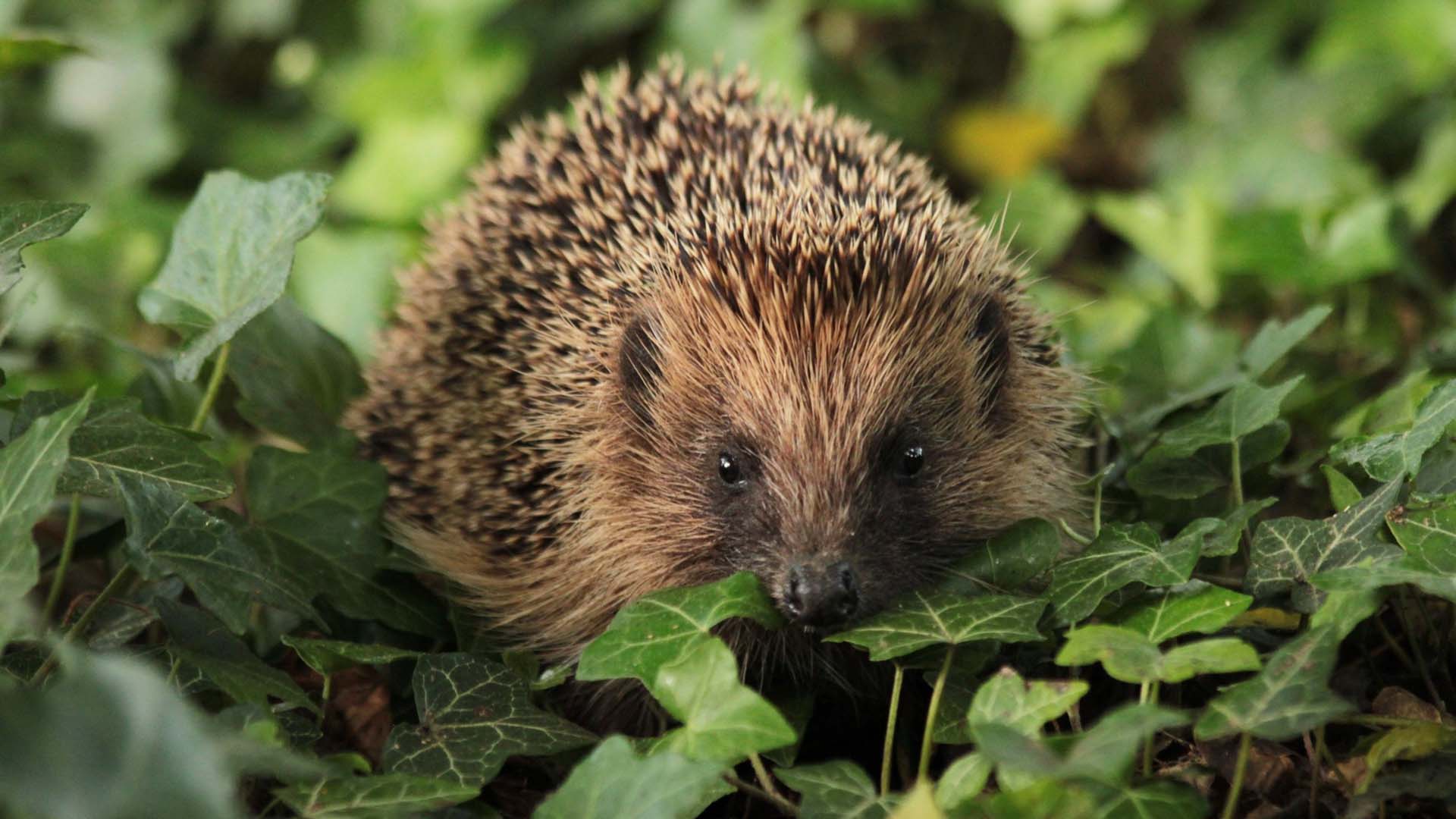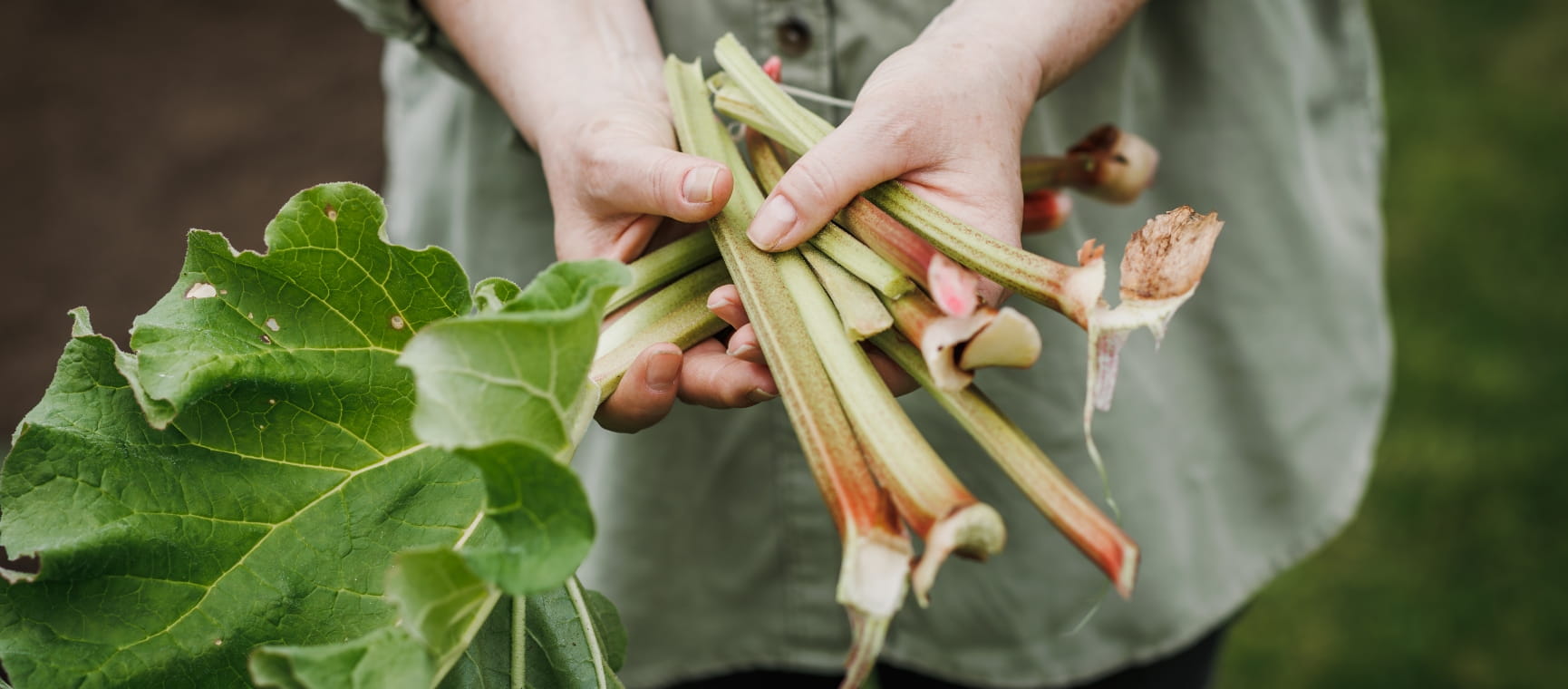
Got a hankering for rhubarb crumble? Then you might be eager to harvest the bounty growing in your garden.
But did you know that rhubarb should only be picked at certain times of year? It’s also important to know how to harvest rhubarb, as doing it incorrectly could leave your plant susceptible to disease.
Read on to discover the signs that your rhubarb is ready to be harvested, and learn the correct way to do it.
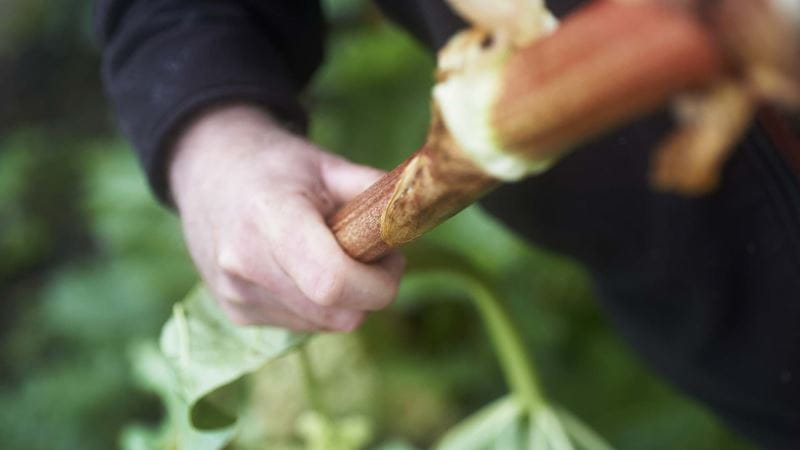
Saga spoke to Dene Wood, head gardener at the National Trust’s Clumber Park in Nottinghamshire. The garden is home to the National Collection of rhubarb, with 131 cultivars, so if anyone knows the right time to pick rhubarb, it’s Wood.
“Unless forcing, you’d be looking to start pulling your rhubarb around the end of April,” says Wood.
“Wait until you have a full-looking plant, with at least 6–10 leaves. Some people get excited when they see the first leaves, but harvesting too early will drain the plant.”
You can pick forced rhubarb sooner, typically from the start of April – as we explain below.
The season usually lasts until July, but you shouldn’t pick beyond that month – as Monty Don explains in his tips below.
For an early crop of sweeter, less bitter rhubarb, you can force a well-established crown to produce a harvest by covering it with a forcing pot.
This should be done in late winter (early February is ideal), while the plant is still dormant. You should expect stems to be ripe and ready for picking 7–8 weeks later.
So, what colour should rhubarb be when you pick it? Tom Cole is head of horticulture and landscaping at Capel Manor College. He advises picking rhubarb when it’s a “good dark pink colour” and “between 1.5cm and 2.5cm in diameter”.
He also warns that you should “not pull any stems in the plant’s first year, as it will seriously weaken the plant”.
“Pick leaves from the outside first,” Wood explains. “This is a bit of a skill – grasp the stem near the base, then pull and twist at the same time. Some people cut their rhubarb but it’s easy to leave material behind in the crown this way, which can rot and become mouldy.
“Be sure to discard the leaves, which contain oxalic acid and can cause an upset stomach. Then, get crumbling!”
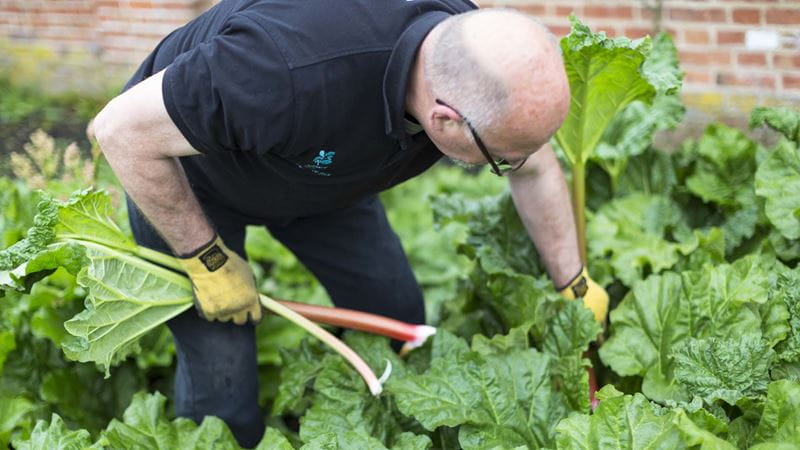
During a segment of Gardener’s World, first broadcast in March 2022, presenter Monty Don explained how to harvest rhubarb without damaging your plant. “You should feel [the rhubarb] come away with a little bit of the base attached to it, which can be cleaned off before you eat it.”
Don warns that: “If you cut it, there is a risk of die-back and a bit of disease getting in. Whereas pulling the rhubarb from the base and allowing it to break off naturally will ensure that new green shoots form.”
Don reveals that rhubarb can be “harvested regularly throughout spring and early summer” but that you should “stop once you get to July”.
“Let the plant grow, let the leaves get really big and all that goodness that they take through photosynthesis will feed back into the roots and ensure a good harvest the following year.”
Amy Cutmore has been writing about interiors for more than 20 years, harking back to the days when glossy red kitchens, toile de Jouy and rag rugs were all the rage, and everyone wanted a Changing Rooms makeover. You’ll have seen Amy’s work at Britain’s biggest homes titles, including Ideal Home, where she served as Consumer, Technology and Group Digital Editor. She has also edited or written for Homes & Gardens, Livingetc, 25 Beautiful Homes, Real Homes, Gardeningetc, Inside Readers’ Homes, Inspirations for Your Home, Country House & Home, Top Ten Reviews, Trusted Reviews and Country Life.
View author page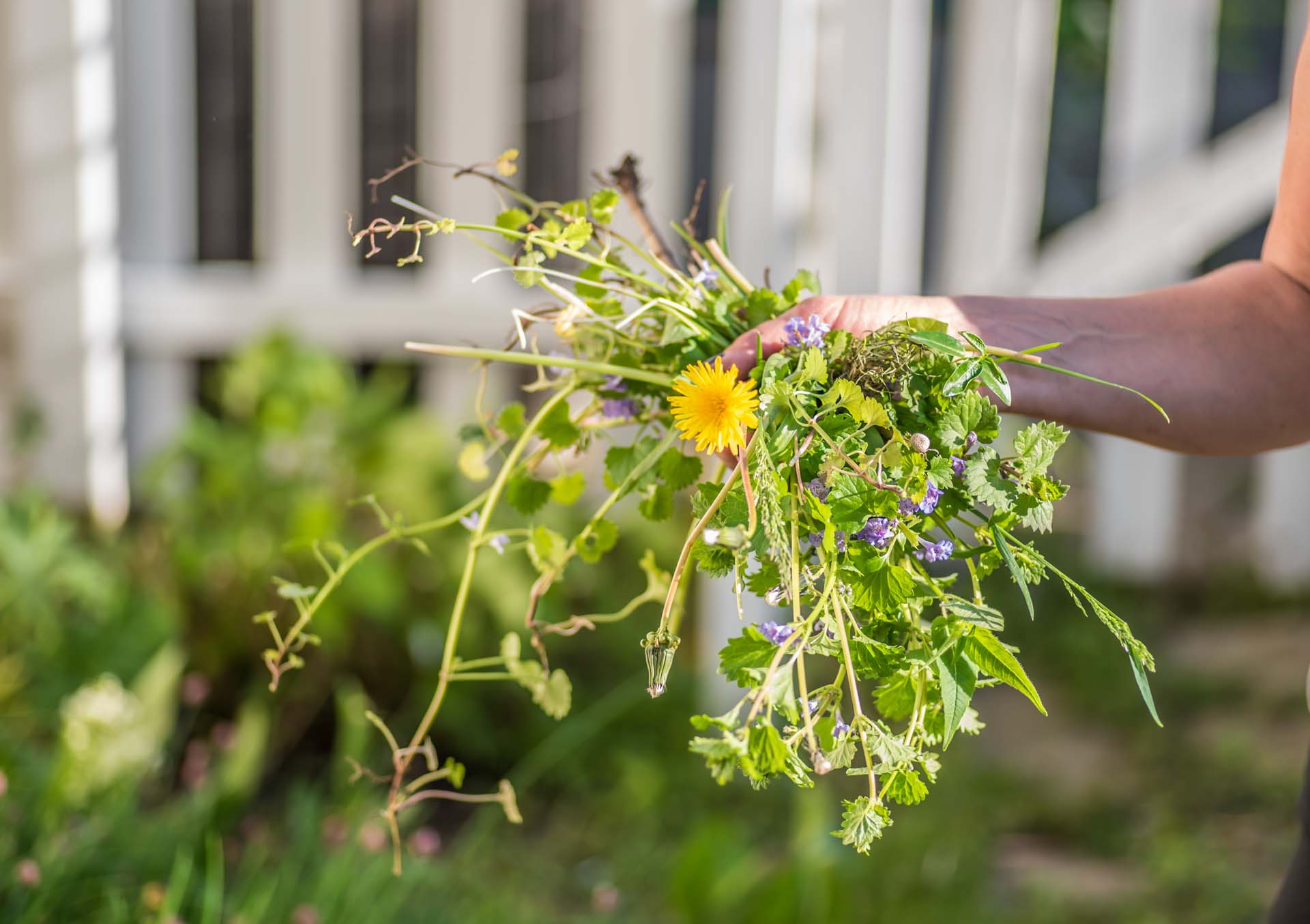
Discover ten easy ways to get rid of weeds naturally while protecting the ecosystem.
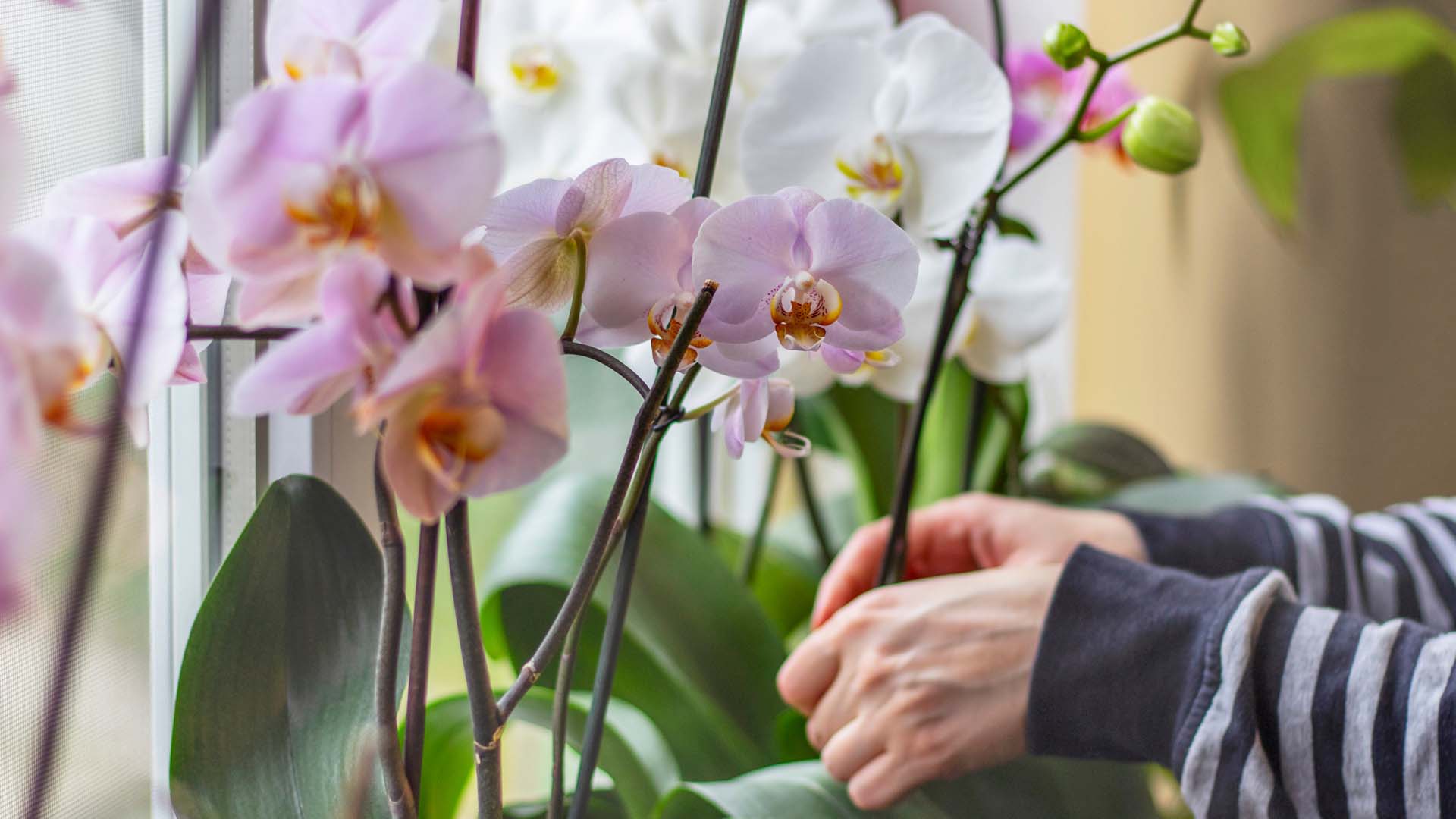
Our expert pruning and watering hacks include a top tip to keep them flowering from Alan Titchmarsh.
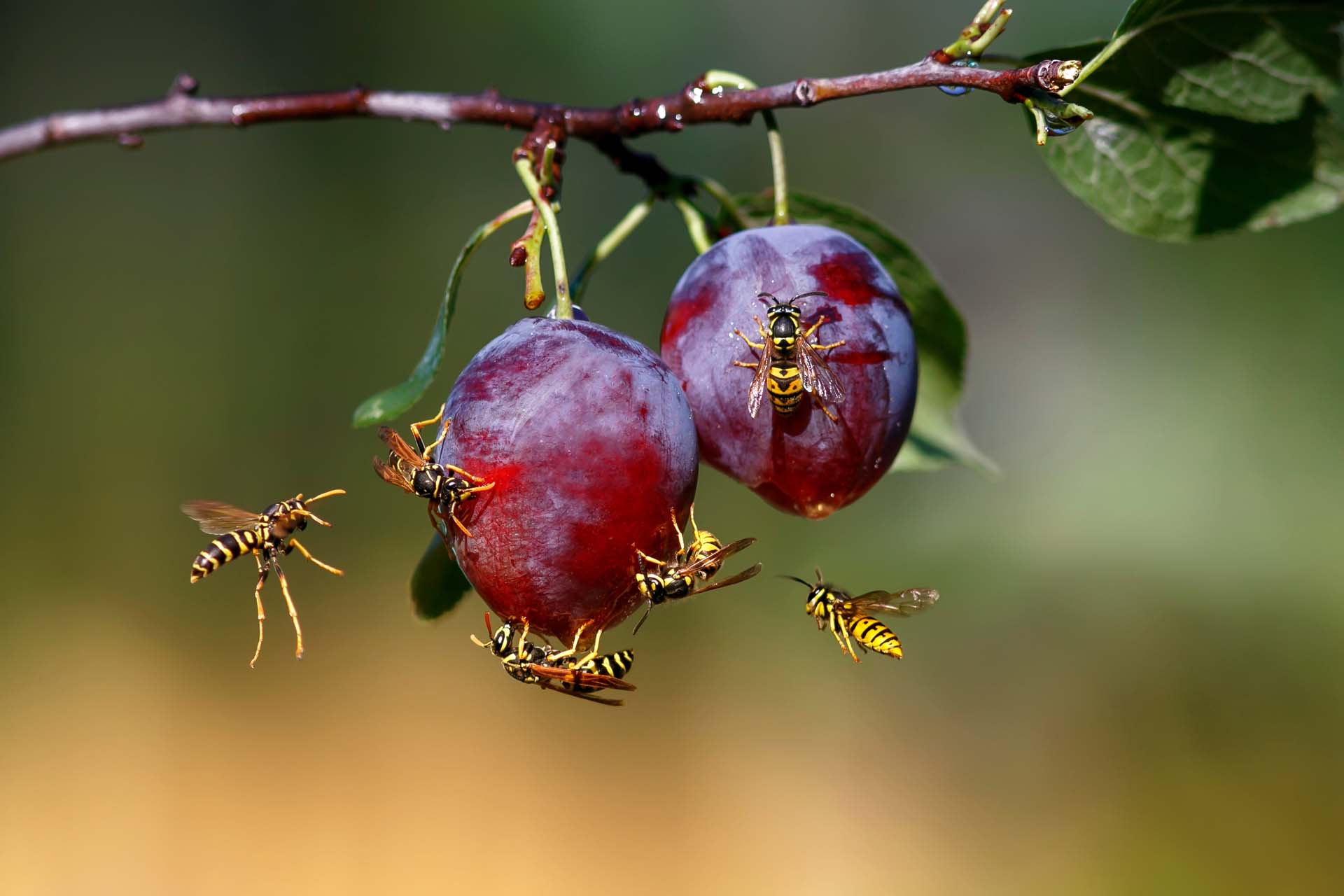
Blighted by buzzing? How to keep wasps out of your garden without harming them so you can enjoy the summer.
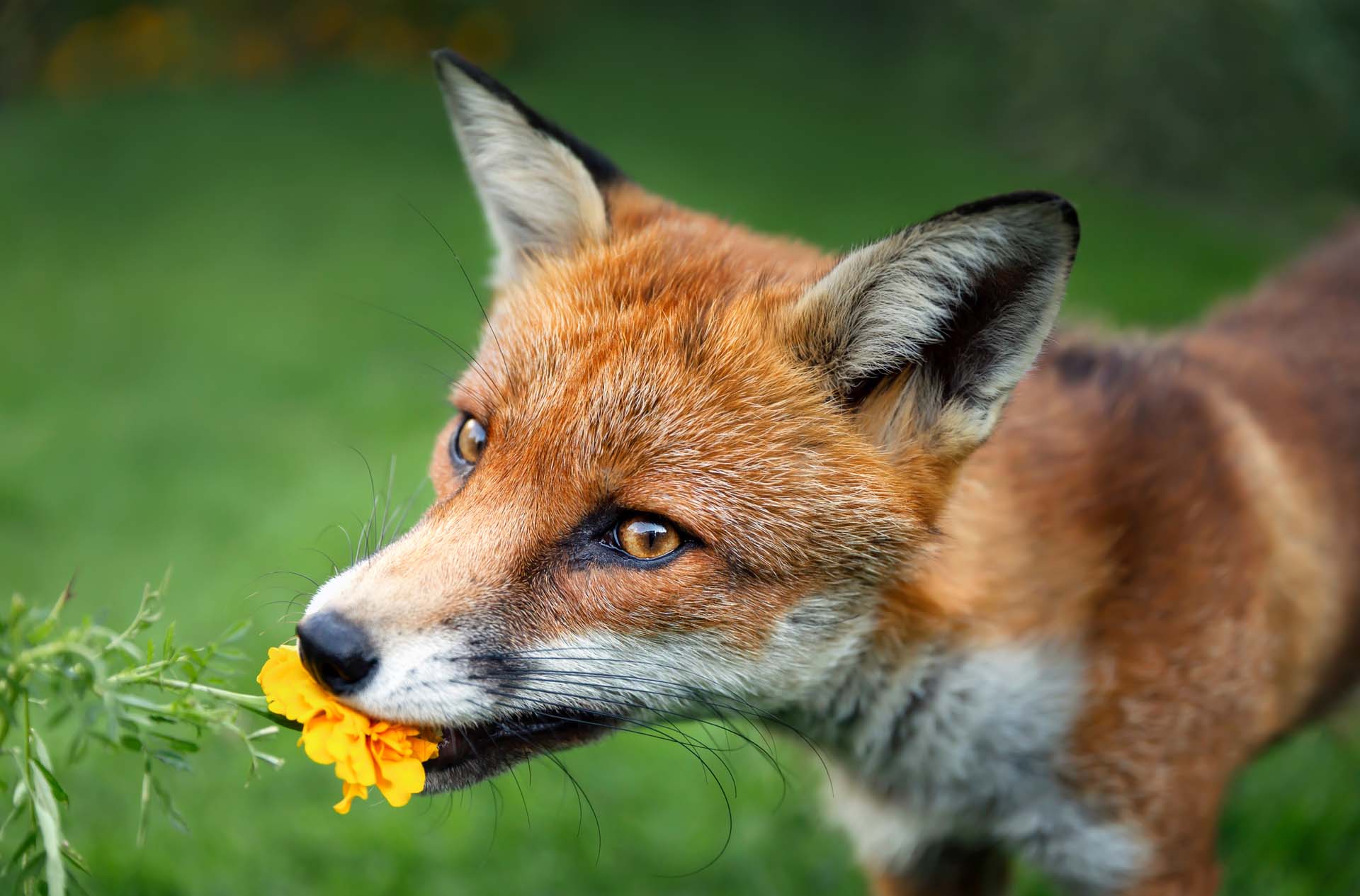
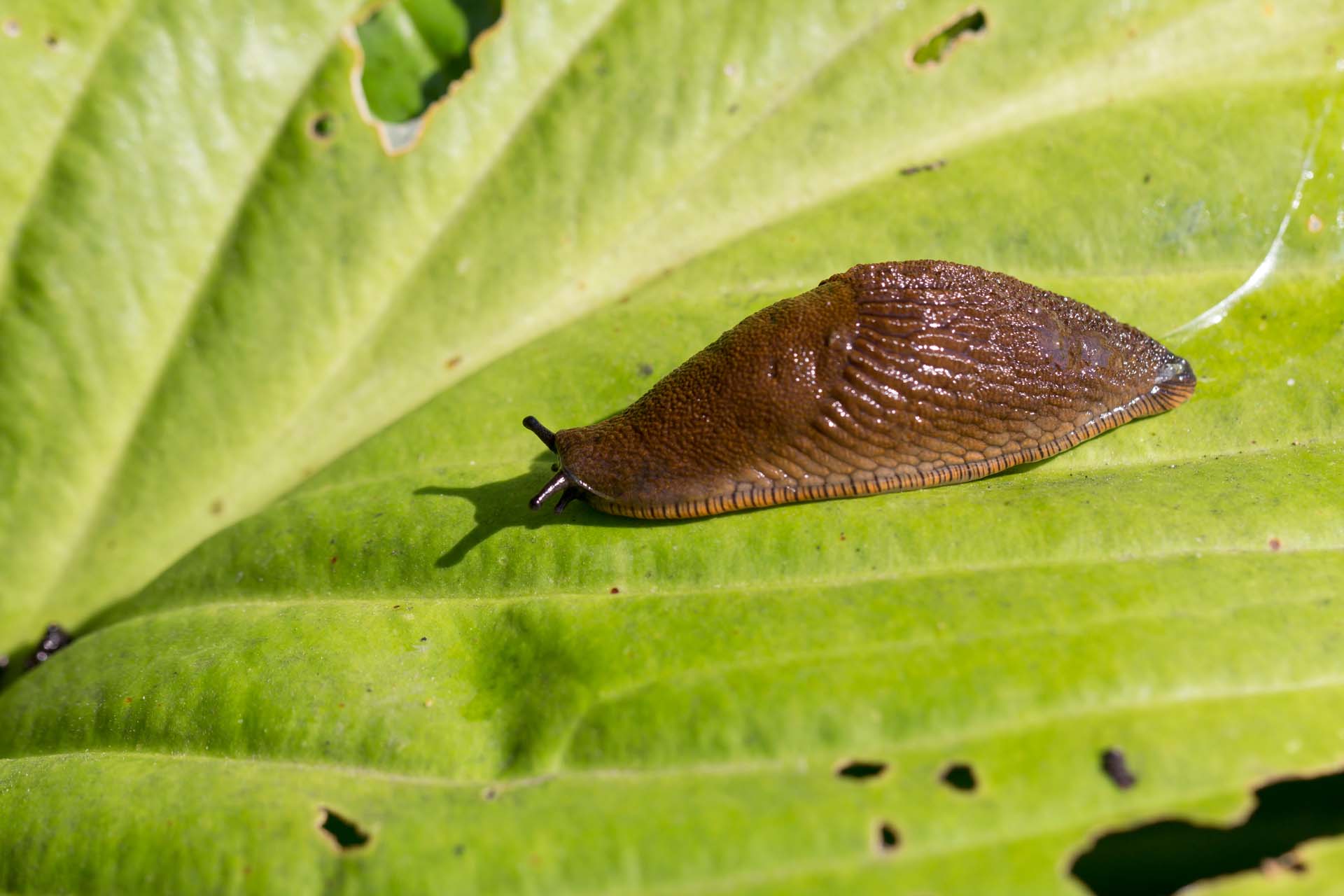
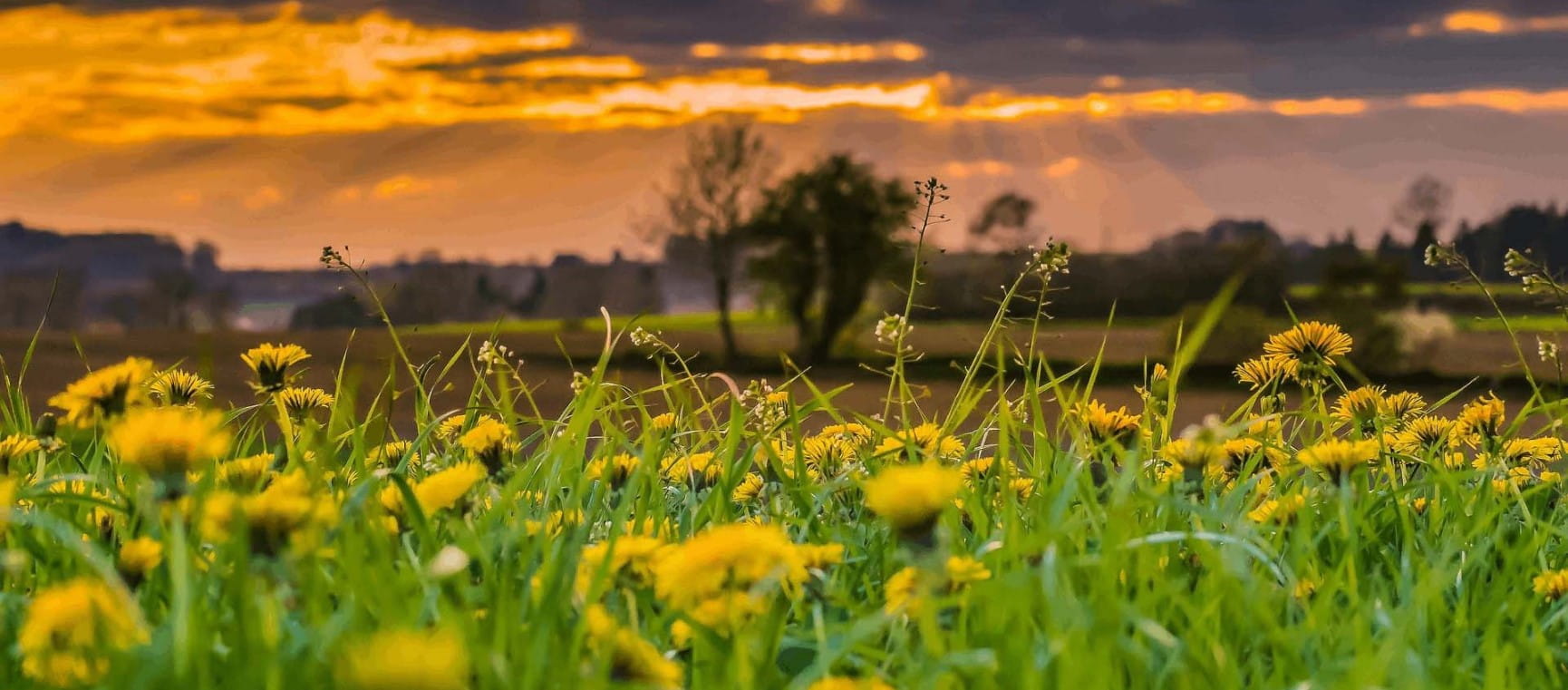
Want to know how to get rid of dandelions? Advice on how to tackle them but why they might be worth sparing.
